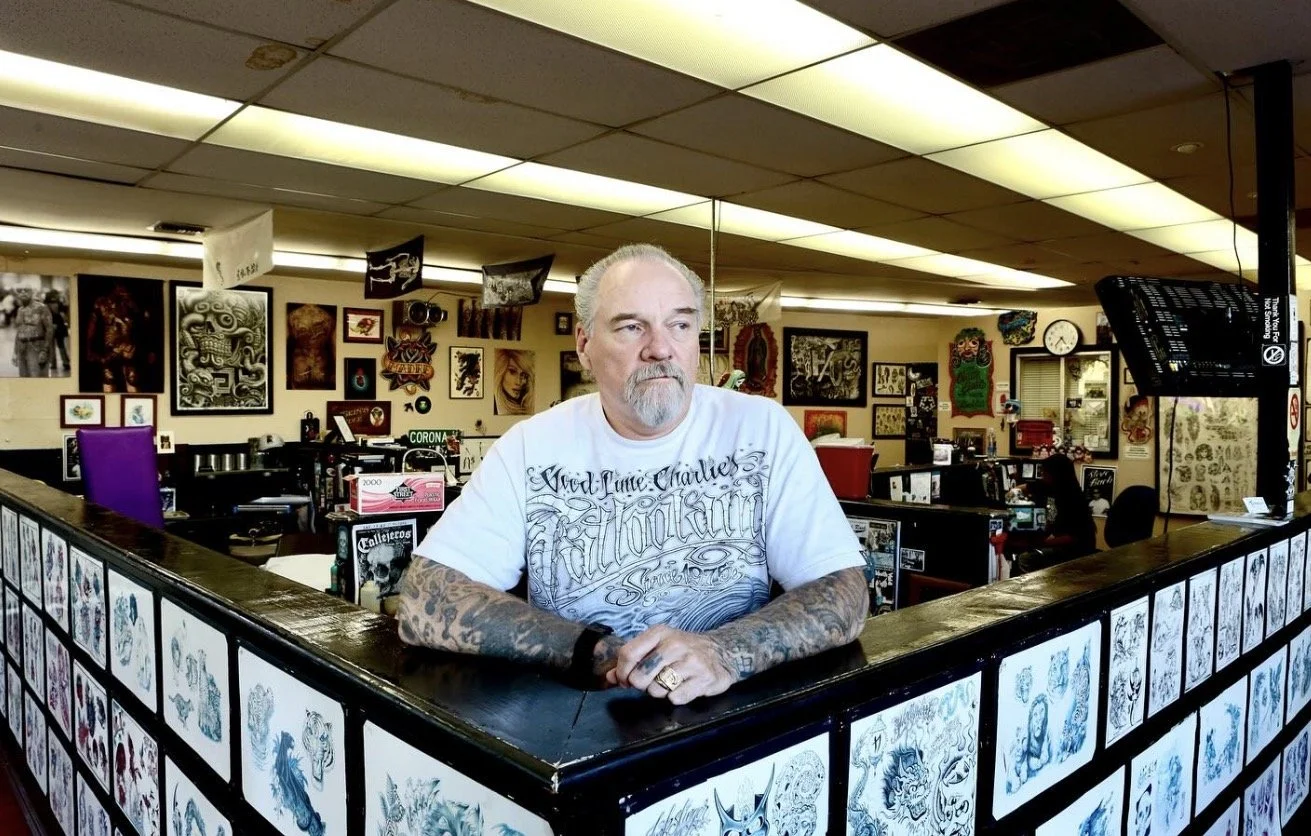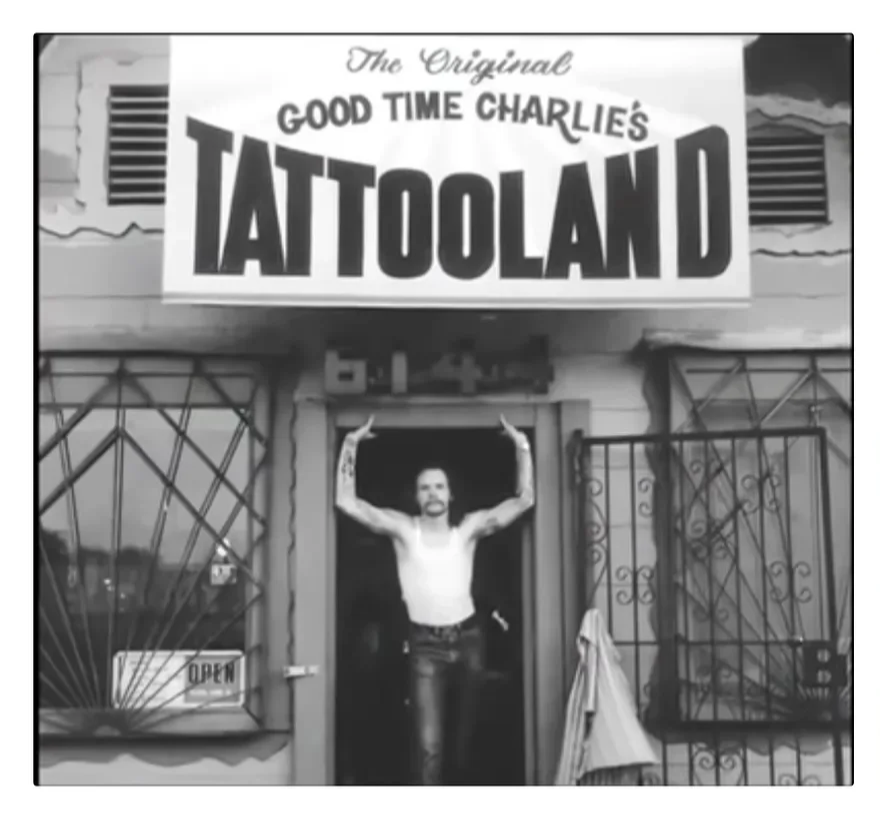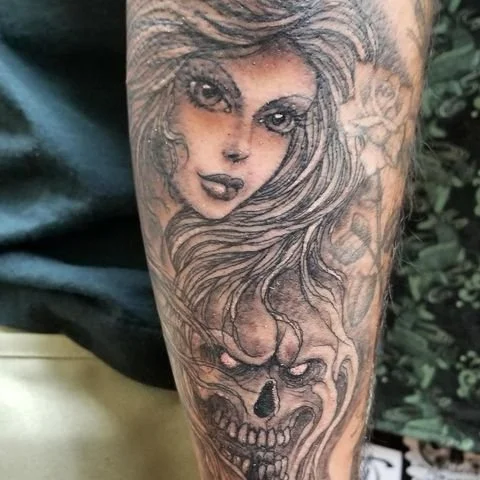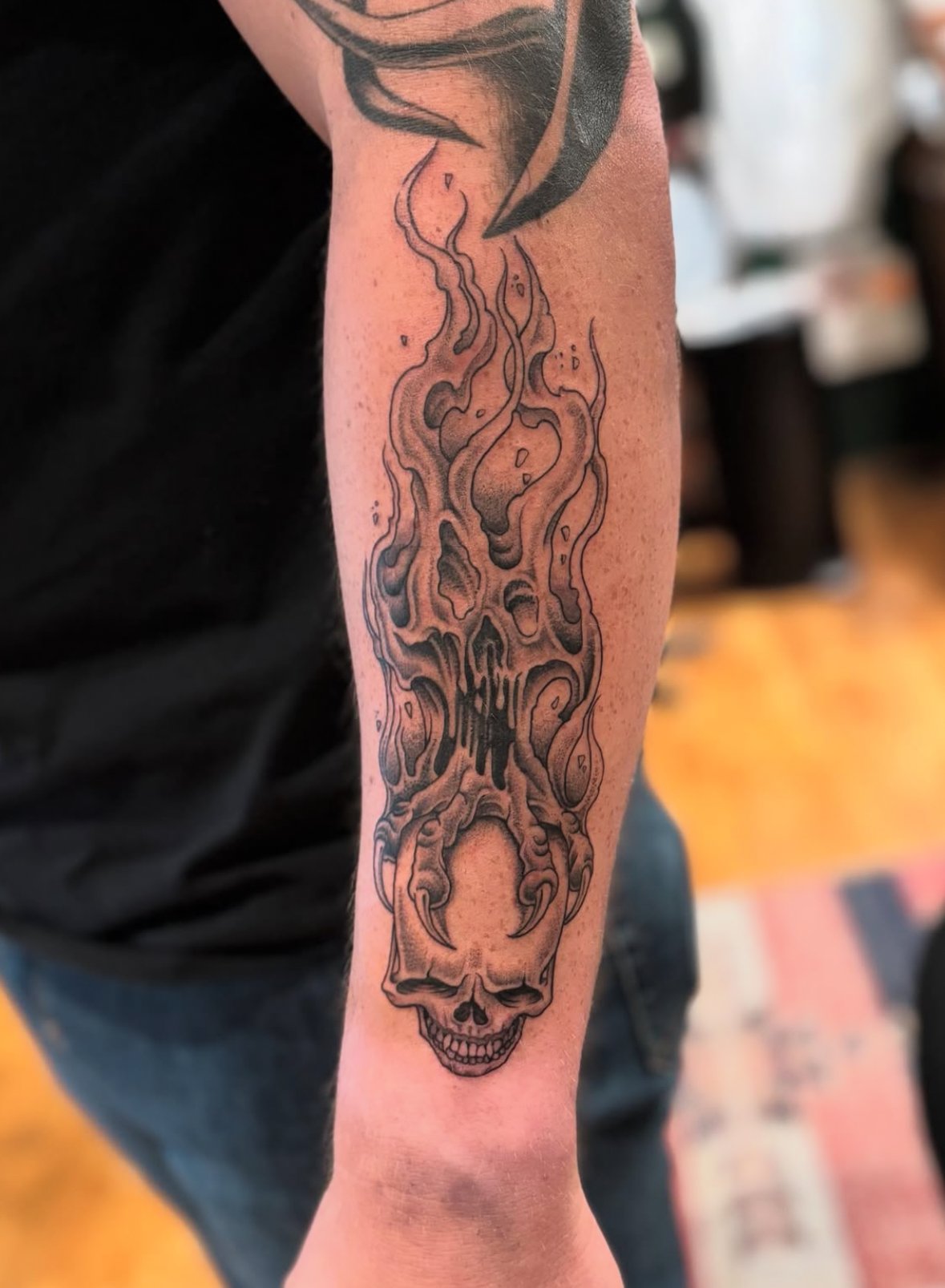Rose Tattoo Artist Spotlight: Jack Rudy
Jack Rudy — The Godfather of Fine Line and Single Needle Tattooing
Jack Rudy’s name is synonymous with fine line, black-and-gray, and single-needle tattooing, especially here in Southern California. From his early tattooing in Anaheim to his global recognition as a master craftsman, Rudy’s work changed what tattoos could look like—and what they could mean.
Every realistic portrait, delicate script, or smooth grayscale piece being tattooed today carries traces of his innovation.
He remains one of tattooing’s most respected figures—a craftsman, innovator, and storyteller whose influence will last for generations.
Early Life & Background
Jack Rudy, or as some know him “Jack from the Way Back”, was born and raised in Southern California where he grew up surrounded by car culture, music, and the emerging tattoo scene of the 1970s. After serving in the U.S. Marines, Rudy found his way into tattooing during a time of massive cultural and artistic change…
Jack became attracted to the lowrider scene beginning in the late '60s. Living in Lennox, California, Jack had just started high school and gotten his first car in 1972-a '53 Chevy 210 club coupe
Having been an artist for most of his life, Jack did his first tattoo in 1969. "I started making homemade machines. The first one I made was out of my dad's electric razor when I was 17 years old. I didn't tell him what I was going to use it for," Jack says.
He left for the Unites States Marine Corps when he was 18 and met a guy when he was 19 right out of boot camp who he became friends with who agreed to teach him and let him work for him in the summer of 1975. That was the legendary Good Time member Charlie Cartwright, and his shop was on Whittier Boulevard, which was closer to Garfield Avenue, between Garfield and Atlantic. Jack says the shop remained there for a few years and then Charlie sold the business to Don Ed Hardy in 1977. They moved down the street and then Hardy sold the property sometime in 1984. By then, the East L.A. store was history and it was time for Jack to move on. He decided to go to Orange County, specifically Anaheim, California, and opened his doors in January of 1985. He's moved once more since then but is still in Anaheim
⸻
Entering Tattooing & The Start of Fine Line Tattooing
In the early 1970s, Rudy’s life changed when he met Charlie Cartwright, a tattooer already experimenting with new styles and techniques. Together, they worked at Good Time Charlie’s Tattooland in East Los Angeles—an iconic shop that would become the birthplace of modern black-and-gray single-needle tattooing.
At the time, most tattooing was done using traditional multi-needle groupings and bold, colorful pigments. Rudy and Cartwright, inspired by Chicano prison-style tattoos that were created using handmade machines and single sewing needles, began experimenting with diluted black ink to create shades and soft gradients.
By modifying their machines to run smoother and lighter, and by creating a single needle that could hold the ink in the tube, they could achieve a previously unseen level of precision and tonal realism—allowing them to replicate pencil-like shading, portraits, religious icons, and intricate lettering
This innovation would permanently alter the course of tattoo history.
The Rise of Single Needle Tattooing
Rudy’s signature style quickly became legendary. His work showcased smooth gradients, delicate gray tones, and realistic imagery—far different from the heavy black outlines of traditional American tattooing.
Becoming most well known for his signature “Rudy” Lady heads, skulls inspired by lowrider culture, Chicano inspired script and lettering, as well as classic religious imagery.
In the late 1970s and 1980s, as tattooing entered a new era of artistic legitimacy, Jack Rudy’s work was featured in magazines, conventions, and books that highlighted how far tattooing had evolved as an art form. His single-needle approach influenced thousands of artists across the globe and created an entirely new genre within tattooing: black-and-gray realism.
Jack Rudy Skull and Claw Flash done by Daniel Collins at Rose Tattoo in Point Loma San Diego
⸻
Technical Innovation & Influence
Jack Rudy is not only known for his artistry but also for his mechanical understanding of tattoo machines. He would be constantly tweaking and customizing his rotary and coil setups to achieve smoother shading and longer, cleaner strokes.
He helped develop techniques that made single-needle tattooing viable in professional shops—something that was once considered too risky or delicate for mainstream use. Rudy’s innovations in ink dilution, needle tuning, and shading techniques became foundational knowledge for modern tattooers specializing in realism, portrait work, and script.
If you want to learn more about the invention of the single needle check out our other blog here
⸻
Good Time Charlie’s Tattooland & The West Coast Legacy
Tattooland, founded by Charlie Cartwright and later run by Rudy, became ground zero for the fine line black-and-gray movement. Located in Anaheim, California, the shop served as a meeting ground for tattoo artists, car builders, musicians, and gang members alike—an intersection of Southern California’s underground culture.
Rudy eventually took ownership of Tattooland, continuing to mentor artists and preserve its legacy. His mentorship emphasized professionalism, precision, and respect for tattooing’s craft and history. Many artists who trained or visited Tattooland went on to shape tattoo culture around the world.
⸻
Legacy & Influence on Tattooing
Unfortunately Rudy passed January 6, 2025 but his legacy and artwork continues to live on.
His impact can be felt in nearly every major style of tattooing today—from hyperrealism and portraiture to modern microfine tattoos and minimalist designs. Many of the delicate line techniques and grayscale shading methods used by tattooers globally trace their techniques directly back to Rudy’s innovations.
Jack Rudy’s contributions goes far beyond technical innovation—he changed the visual language of tattooing. His blend of realism, cultural storytelling, and respect for traditional roots connected tattooing to both fine art and lived experience.
Jack's advice for young artists who want to get into the business is: "The only real way of learning this is through a righteous apprenticeship in a shop setting. There are some so-called schools, but it's just bullsh*t. You have to practice universal precautions in as sterile and sanitary a manner as possible to protect yourself as well as the public. Always do your best work. Even if you see something you did say 30 years from now that now looks like crap, you're still always gonna know that when you did that, it was the best that you could do at the time. Because to me, this is as important as plastic surgery. If you're not going to do it right, don't do it at all. Do it when you want to do it, not when you feel like you have to do it. This is the human canvas, there's really no room for a mistake on it so you have to do your best."
Through his single-needle techniques, he brought emotion and depth to skin art—transforming tattoos into photographic, deeply personal representations.
His career stands as a bridge between eras: from outlaw biker shops to modern professional studios.
At Rose Tattoo San Diego, the influence of Jack Rudy’s artistry runs deep. Many of our artists draw inspiration from his meticulous approach to linework and shading — blending traditional roots with refined single-needle technique.
If you’re looking for a fine line black and grey tattoo in San Diego, our team continues the legacy that Rudy helped pioneer: clean lines, smooth gradients, and timeless imagery.
👉 Book your appointment today to get a tattoo inspired by Jack or pick some flash off of the walls to continue the tattoo legacy and history.





